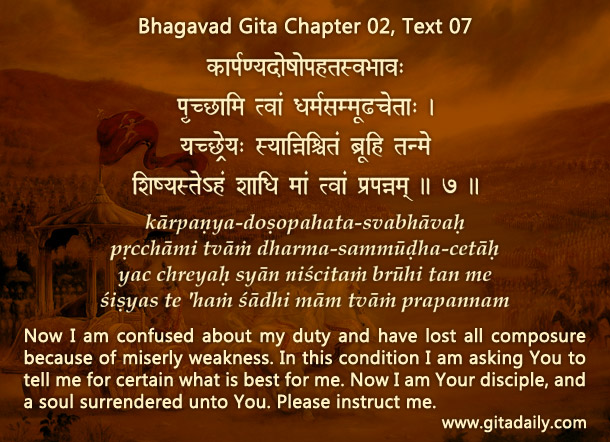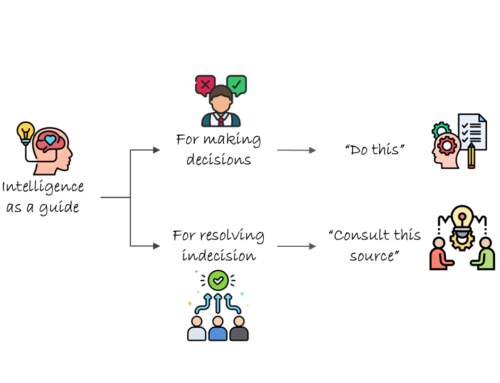Children who ask questions are frequently appreciated for their healthy curiosity. But given how many things there are to know in the world and how the process of questioning can go on endlessly, over time the children’s guides and even the children themselves try to restrict the questioning to relevant questions – questions about things that matter, not questions about anything and everything.
Still, even while focusing on relevant questions, we often overlook the most relevant question – the question that underlies all questions. That question pertains to our place and purpose in the world: “Who am I? And what am I meant to do in life?” The culture around us usually assigns us roles and sets us goals. And such roles and goals shape for us, consciously or subconsciously, our place and purpose.
Only when life’s upheavals shake us severely do we question whether our assigned or assumed roles and goals coincide with our actual place and purpose. The Bhagavad-gita begins with such a conceptual shake-up within Arjuna, who already had an influential place and consequential purpose. But he recognized that while pursuing the purpose of a warrior bent on victory or heaven, neither kind of success – earthly sovereignty or heavenly prosperity – would free him from grief (02.08).
At such a moment of profound cognitive dissonance, Arjuna asked Krishna for guidance (02.07). Significantly, he asked not a contextual question whether he should fight or not, but a universal question: “What is my dharma?” Dharma refers not merely to some religious or social code, but to the course of action that enables us to realize our complete potential – material and spiritual. Thus, Arjuna’s question could be rephrased as, “What is my place and purpose in life?”
The universality of Arjuna’s question and Krishna’s response makes their conversation, though spoken millennia ago, eminently relevant even today.
Explanation of article:
Podcast:



Leave A Comment